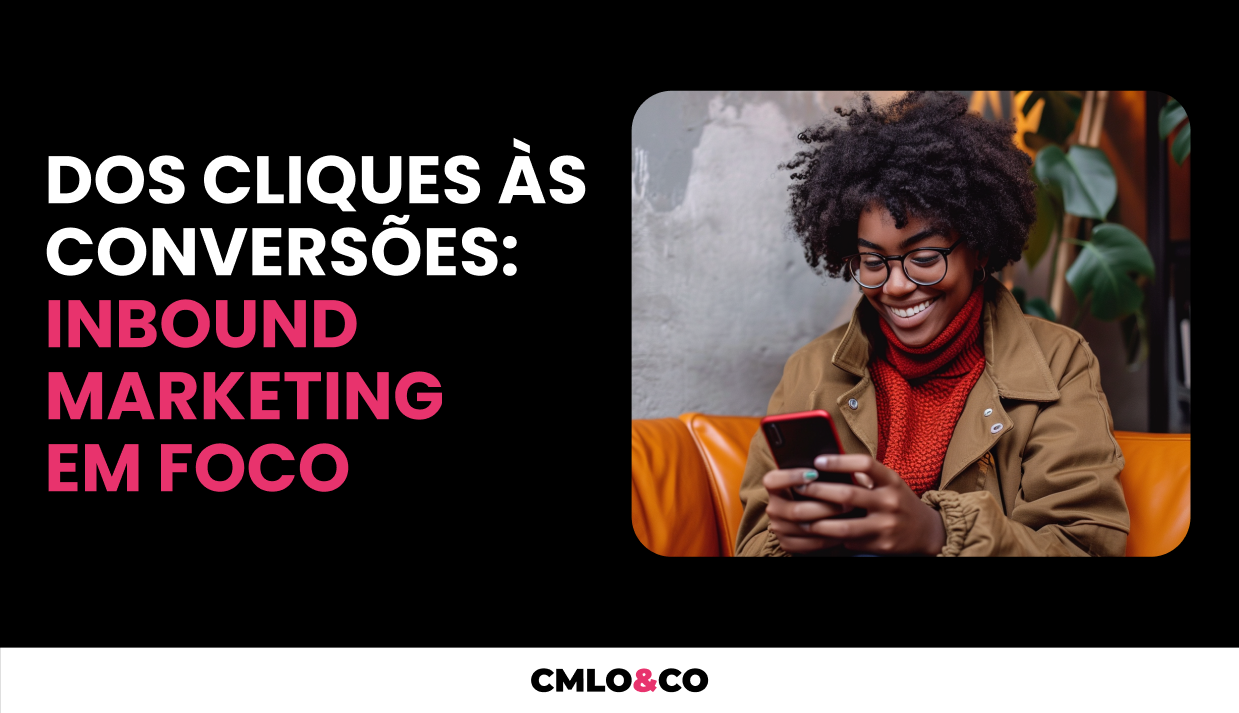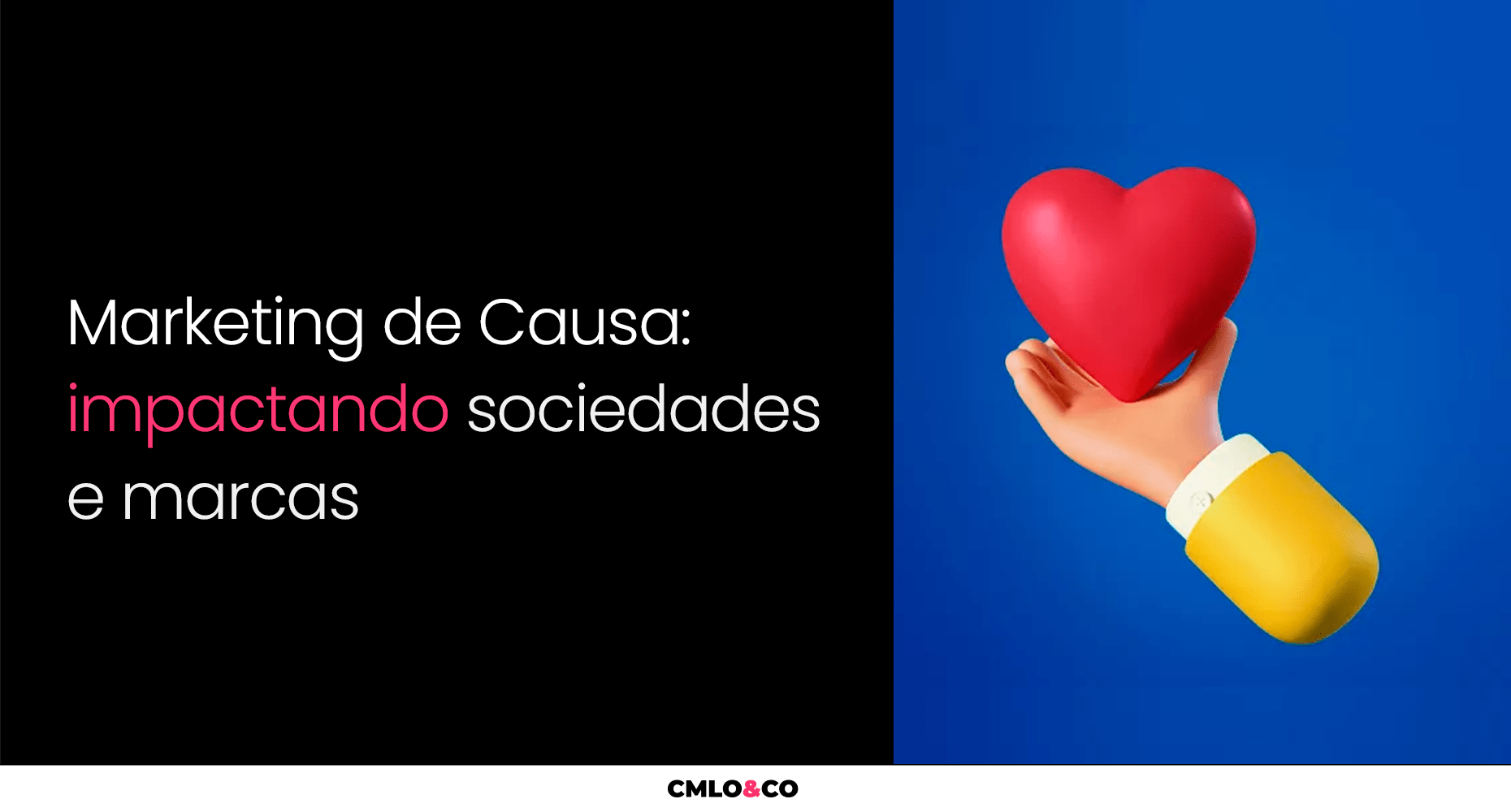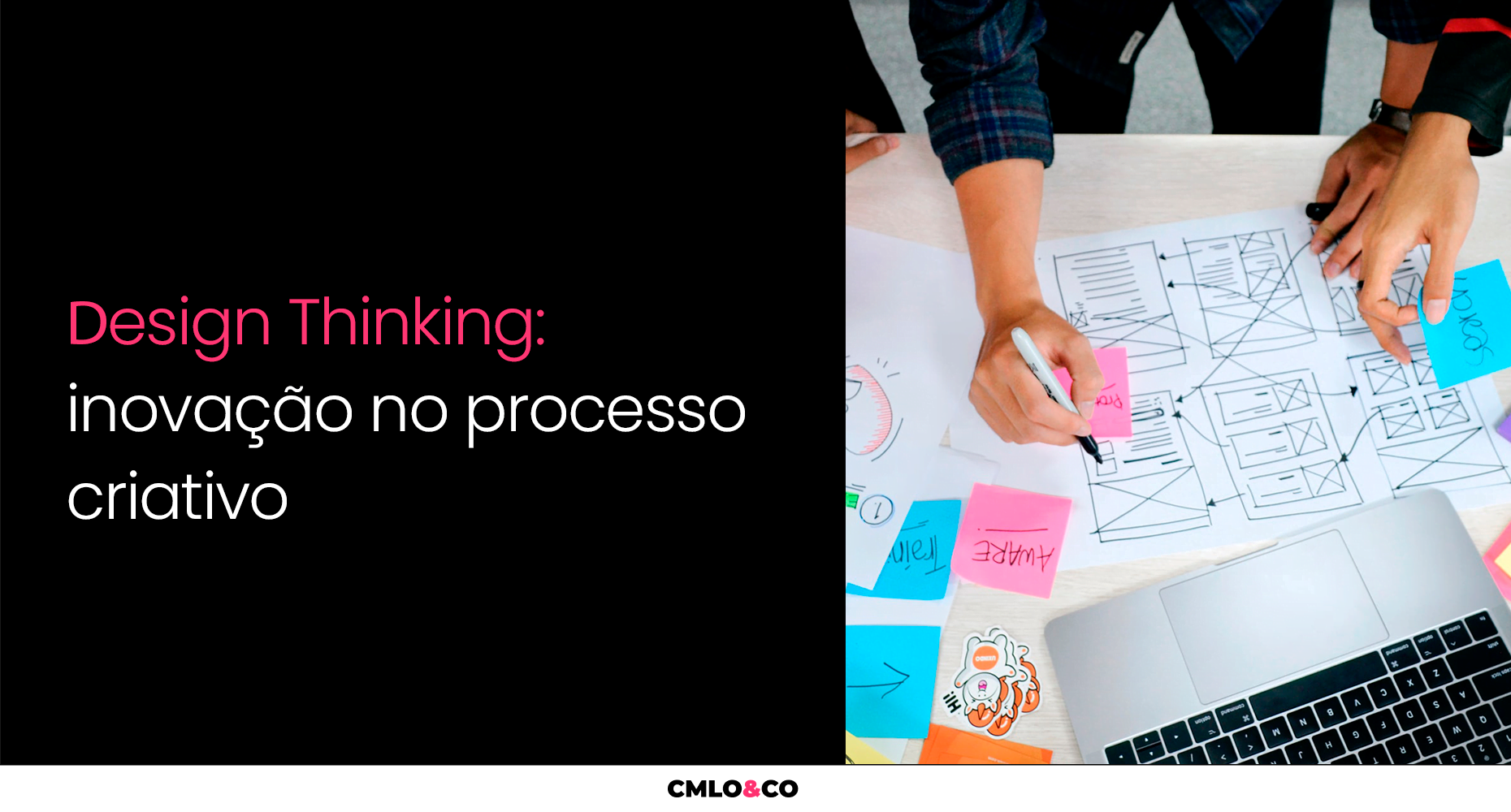Have you ever heard of inbound marketing? It's one of the most effective digital marketing strategies for attracting, converting and retaining customers in the internet age. But how does inbound marketing work? What are its objectives, stages and benefits? And what is the future of this methodology that has revolutionized the market over the years?

In this article, we're going to answer all these questions and show you how you can apply inbound marketing in your company to achieve incredible results. Let's go?
What is inbound marketing?
Also known as attraction marketingis a form of communication that seeks to educate, inform and entertain the target audience, offering relevant and valuable content on different digital channels, such as blogs, social networks, emails, videos, podcasts, webinars, among others.
The aim of the strategy is to attract potential customers who are looking for solutions to their problems or needs. But in a different way to traditional marketing.
Instead of interrupting the consumer with invasive and unwanted ads, the strategy creates a relationship of trust and authority with them, guiding them through a buying journey to the final decision. This is what inbound search is all about:
- Increase qualified traffic to the company's website or blog;
- Generate leadsIn other words, contacts who show an interest in the product or service on offer;
- Nurture leads with relevant and persuasive content that leads them further along the sales funnel;
- Convert leads into customers by presenting the best offers and arguments;
- Build customer loyalty by maintaining an after-sales relationship and encouraging repurchases and referrals.
How is inbound marketing done?
Attraction marketing follows a sales funnel model, which represents the stages a consumer goes through until they become a customer. It's worth noting that each stage requires a different approach and an appropriate type of content. Here's how it works:
Top of the funnel: learning and discovery
At this stage, the consumer doesn't yet know that they have a problem or a need, or they don't know how to solve it.
They are therefore looking for general and educational information on a subject that interests them.
The aim of inbound marketing, in this case, is to attract their attention and arouse their curiosity by offering contents such as blog posts, ebooks, infographics, podcasts and videos, for example.
Middle of the funnel: recognizing the problem and considering the solution
The middle of the funnel represents the phase in which the consumer already recognizes that they have a problem or need, and begins to look for possible solutions. They are therefore more interested in content that shows the advantages and disadvantages of each option.
The aim of inbound marketing here is to show that your company has the ideal solution for them, offering more in-depth and persuasive content that shows the benefits of your offer.
To do this, you can present content that highlights the benefits and efficiency of your solution, such as newsletters, webinars, white papers, podcasts, comparisons and others.
Bottom of the funnel: decision to buy
It represents the last stage of the inbound buying journey. At this stage, the consumer is already ready to choose the best solution for their problem or need, and just needs a final push.
In other words, they are more receptive to content that presents the features and benefits of the product or service offered, as well as the commercial conditions and guarantees.
The aim of inbound marketing is then to convince them that your company is the best choice by offering content that reinforces your value proposition and eliminates objections.
In other words, it's time to convert leads into customers by offering content such as demos, testimonials, trials, consultancies, coupons and so on.

Inbound marketing and Outbound marketing: understanding the differences
When it comes to marketing strategies, it is essential to understand the fundamental differences between inbound and outbound marketing. Although both seek to attract and convert customers, their approaches and methods are different.
Inbound Marketing
It's a non-intrusive approach that focuses on attracting customers to the company's website or blog organically by offering relevant and useful content.
In other words, instead of interrupting the public with invasive ads, inbound aims to create genuine connections over time by sharing useful, educational and inspiring information.
Outbound Marketing
On the other hand, outbound marketing is a more traditional and direct approach, in which companies actively seek to reach customers through paid ads, mass emails, telemarketing and other forms of conventional advertising.
This approach involves actively distributing marketing messages to a wide audience, often through mass communication channels such as television, radio and billboards.
In practice, companies try to generate interest in their products or services, even if this means reaching people who have no interest or need.
Main differences
Given all that has been said so far, we can say that inbound differs from outbound mainly because of its customer-centric approach, focused on attracting and engaging the target audience with relevant and valuable content.
Meanwhile, in the outbound methodology, the message is often delivered in a more direct and interruptive way, without the recipient's consent. It also focuses on immediate transactions, seeking to close sales quickly.
Despite the differences, it should be noted that both strategies have their place in a company's marketing mix. However, understanding the differences between them is key to determining the best approach to achieving business objectives.
Why invest in inbound marketing?
Investing in inbound marketing is a smart decision for any company that wants to stand out in the market and win more customers. Here are some of the main reasons to bet on this strategy:
Reduce customer acquisition costs
Attraction marketing is cheaper than outbound marketing because it requires less investment in paid media and generates a higher return on investment (ROI).
According to HubSpot, the cost per lead of inbound marketing is 62% lower than that of outbound marketing.
Increase brand visibility and authority
Inbound marketing helps the company position itself as a reference in its segment, producing quality content that educates, informs and entertains the public.
This, in turn, increases the brand's trust and credibility, as well as its online presence and your organic traffic.
Improving customer relations
Inbound actions allow the company to get to know its customers better, their problems, needs, desires and preferences. And, of course, to offer personalized solutions for each of them.
In this way, it is possible to create an emotional bond between the brand and the customer, as they feel valued and satisfied.
Increase sales and loyalty
Inbound marketing helps companies sell more and better, because it delivers the right content to the customer at the right time and on the right channel, increasing their conversion rate.
In addition, it helps the company to retain customers by maintaining constant contact and offering new business opportunities.
The AIDA methodology in inbound
The AIDA methodology is a classic marketing model. In a nutshell, it describes the four stages a consumer goes through before making a purchase: attention, interest, desire and action.
These stages correlate with the stages of the inbound marketing sales funnel, as shown below:
Attention
It corresponds to the top of the inbound marketing funnel, where the aim is to attract the consumer's attention through relevant and educational content on a subject that interests them.
Interest
It concerns the middle of the funnel, where the aim is to generate interest in the product or service offered by the company, through content that shows the advantages and benefits of the solution.
Desire
This refers to the bottom of the sales funnel, where the aim is to arouse a desire for the product or service offered by the company, through content that presents the characteristics and solution differentials.
Action
Finally, it corresponds to the final stage of the inbound marketing funnel, where the aim is to get the consumer to make a purchase, through content that offers incentives and facilities to close the deal.
Thus, the AIDA methodology can be used as a guide to plan and produce inbound marketing content, ensuring that it is tailored to the needs and expectations of each stage of the buying journey.
Best inbound marketing strategies to apply in your company
To apply inbound marketing in your company, you need to follow some essential strategies that will guarantee the success of your campaign. Check them out:
Creating personas
In principle, personas are fictitious representations of your ideal customer, based on real data about their behavior, demographic characteristics, needs and objectives.
Creating personas is fundamental to defining the target audience for your inbound marketing strategy and creating personalized content for each profile.
Content marketing
It concerns the production and distribution of relevant and valuable content for your target audience, with the aim of attracting, educating, converting and retaining customers.
Versatile, the strategy allows you to create, for example, blog posts, email marketing, video content, podcasts and more.
Content marketing is the basis of inbound marketing, because it's through content that you generate traffic, leads and sales.
SEO
SEO (Search Engine Optimization) is a set of techniques aimed at optimizing your website or blog for search engines (such as Google), improving its positioning on the results pages (SERPs) and increasing its organic (unpaid) visibility.
Landing pages
landing pages are pages created for a specific purpose, usually converting visitors into leads or customers.
Landing pages should have a simple design, a clear offer and a form to capture visitors' data in exchange for something of value, such as an e-book, an infographic or a webinar, for example.
CTAs
CTAs (Call to Action) are calls to action that induce the visitor to perform a certain action on your website or blog, such as downloading a rich material, signing up for a newsletter, requesting a quote, among others.
In inbound marketing, CTAs must be attractive, eye-catching, clear and urgent, encouraging the visitor to click on them.
Copywriting
In a way, copywriting is part of content marketing, as it is the art of writing texts. But not just any text. In a persuasive way, with the aim of getting the reader to take a desired action (sell).
To do this, copywriting uses persuasion techniques such as mental triggers (scarcity, urgency, authority), storytelling (engaging narrative), benefits (what the customer gains from the offer), among other tactics, to generate interest and desire in the reader.
Copywriting is essential for creating titles, headlines, slogans, CTAs and other elements that catch the public's attention and generate conversions.
Social media management
The social media management encompasses the planning, execution and monitoring of your actions on social media, such as Facebook, Instagram, Twitter, among others, with the aim of generating engagement, traffic and leads.
It also involves choosing the right platforms for your target audience, defining the frequency and timing of publications.
The future of inbound marketing
With the advance of artificial intelligence, automation, data analysis and other technological tools, communication is becoming increasingly personalized, interactive and efficient.
The good news is that inbound marketing is a strategy that adapts to market changes and new technologies. This means that the methodology will continue to play a crucial role in the world of digital marketing.
But what will the future of this powerful strategy look like? Some trends that should mark the future of inbound marketing are:
- Interactive content: content that encourages user participation and generates more engagement, retention and conversion, such as quizzes, polls, 360º videos, augmented reality, among others;
- Video marketingDynamic, attractive and easy to consume, they should be used to create educational, informative and emotional content that generates more trust and credibility for the brand;
- Conversational marketing: a way of interacting with customers in real time, using channels such as chatbots, instant messaging and social networks. This approach makes it possible to create more human, personalized and effective communication, which generates greater satisfaction and loyalty.
- Personalization in marketing: with the rise of data analysis and automation technology, companies will be able to segment their target audiences more precisely and offer highly relevant and personalized content. This means that customers will feel more connected and engaged with brands, increasing the chances of conversion.
Conclusion
As technological advances take place, one thing is clear: the power of human connection will continue to drive the success of brands.
Therefore, investing in inbound marketing strategies that prioritize personalization, authenticity and user experience will be essential for reaching and engaging customers in the constantly evolving digital world.
Talk to CMLO&CO's team of experts and discover how to attract, convert and retain customers with the best marketing and advertising practices on the market.





